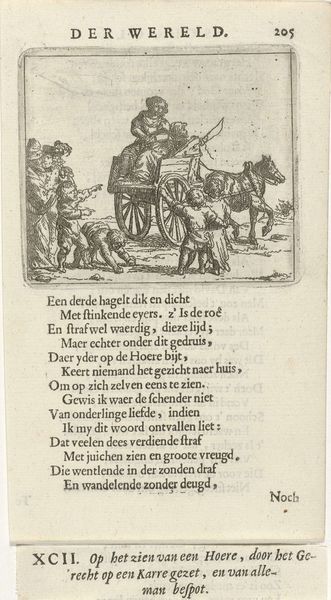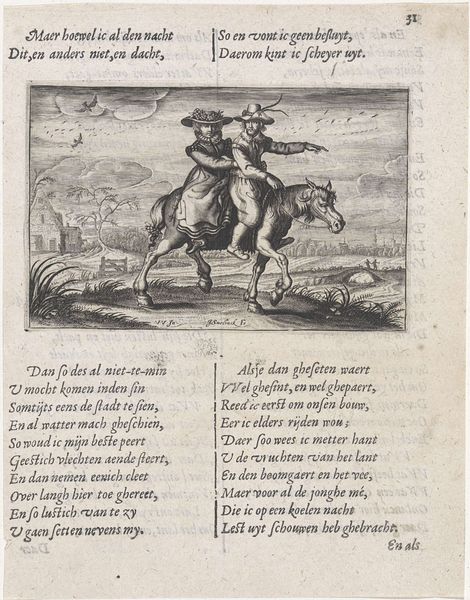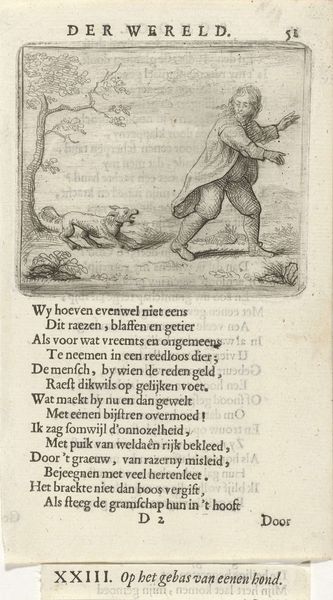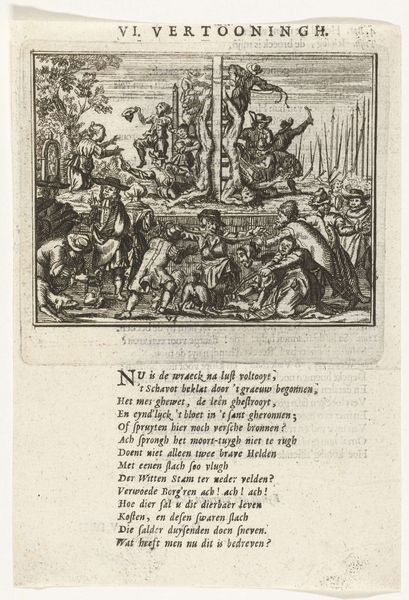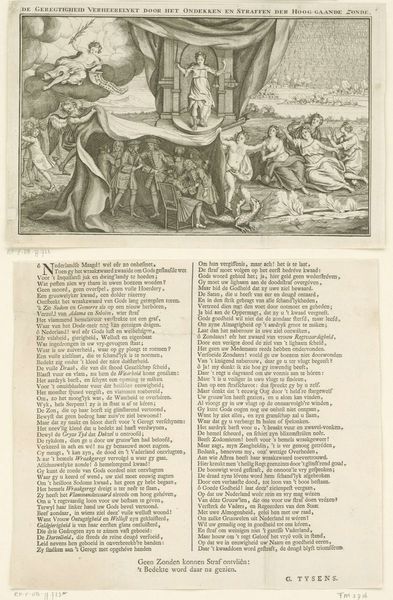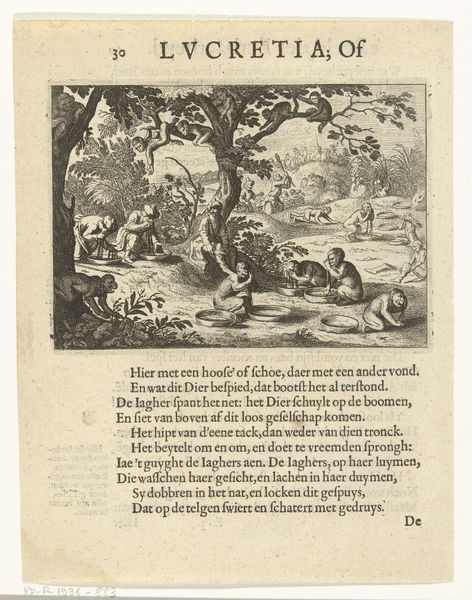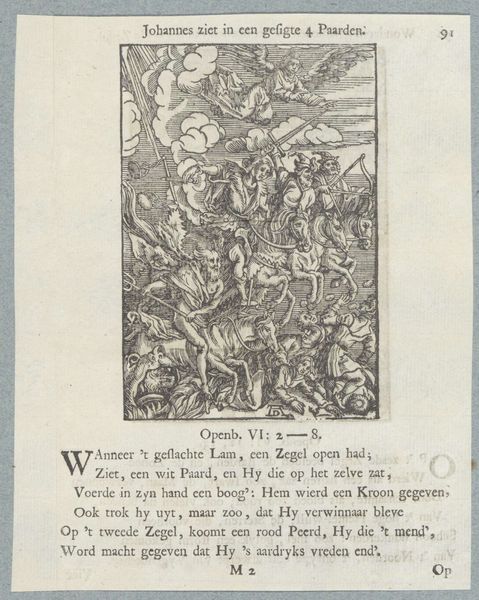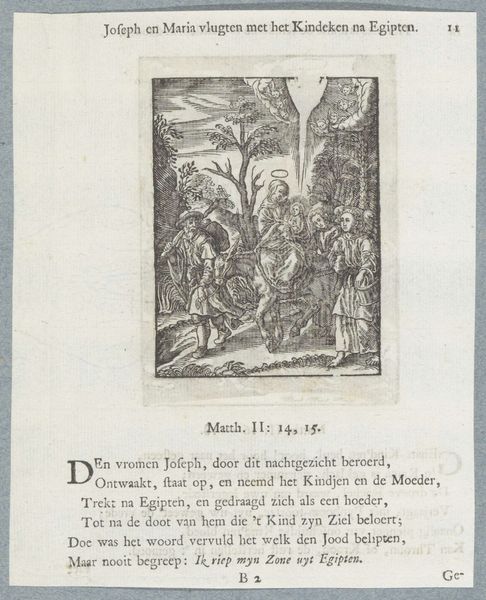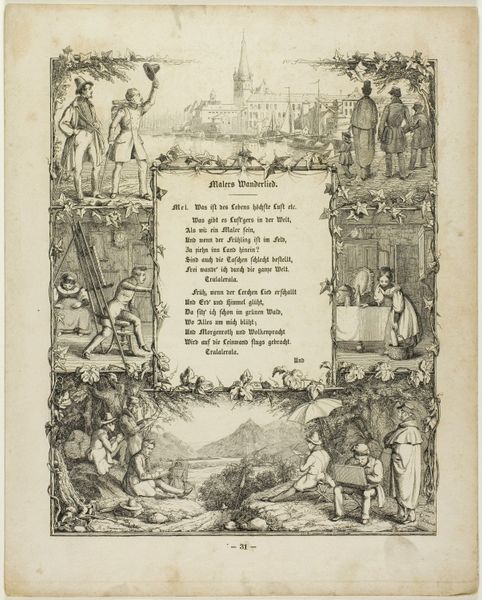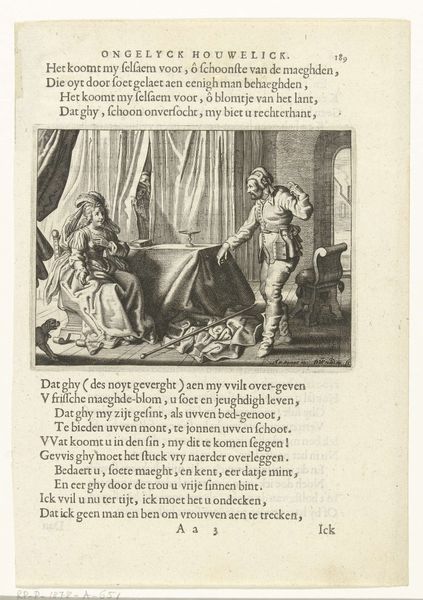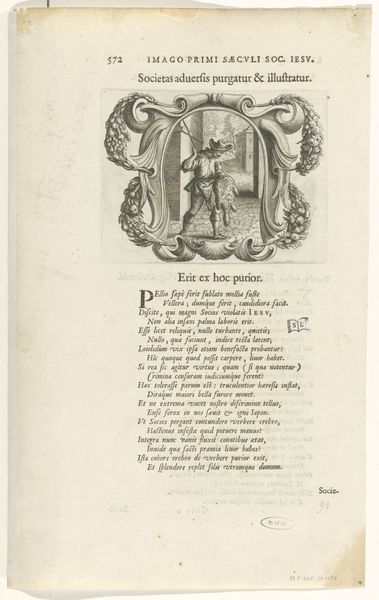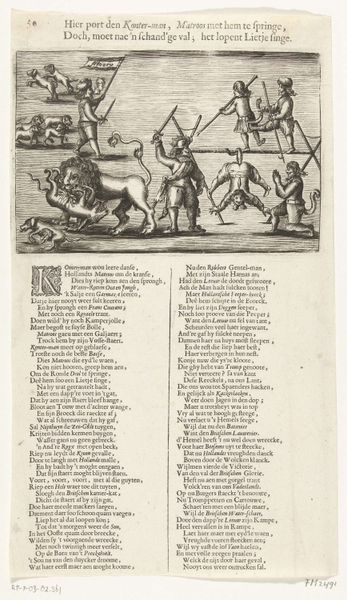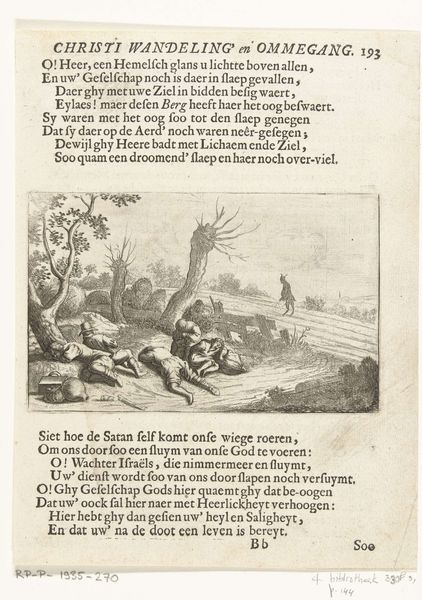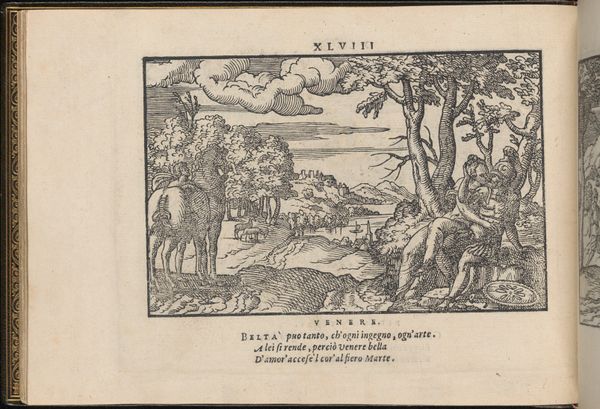
graphic-art, print, etching, engraving
#
portrait
#
graphic-art
#
baroque
# print
#
etching
#
landscape
#
engraving
Dimensions: height 83 mm, width 125 mm, height 216 mm, width 157 mm
Copyright: Rijks Museum: Open Domain
Curator: Immediately, I’m struck by the crisp lines in this early etching and engraving. Simon van de Passe's "Pales," created in 1627, utilizes such precise detail within a seemingly limited palette of tones. Editor: The very subject points to power, both idealized and imposed. Pales was a Roman deity of shepherds, flocks, and livestock. In this work, there's something almost allegorical about it - a statement concerning land ownership perhaps? The pastoral idyll contrasted with, what appears to be in the lines below the image, a folksong that starts describing hardship? Curator: Van de Passe’s mastery of line dictates the shading, and builds form in compelling ways; a clear understanding of tone to differentiate the textures is seen between animal coats and human drapery. Notice the layering of the background landscape against the figure of Pales. Editor: Agreed, the figure is captivating. She sits quite stoically amidst the various animals as the literal and metaphorical center to what, to my eye, comes across as a justification narrative on who gets to do the calling on said land. The poem’s initial lines seem quite deliberate after all… “where folks make the land tillable, where the plough has the field.” Curator: What about the overall composition? Look at how the artist creates depth using a shallow foreground space; consider also how he manages to capture movement. Do you notice the horse as an indicator? Editor: Certainly; a society’s relationship with animals cannot be discounted as inconsequential to land relations and class position. With our current understanding of intersectionality we can assess the human condition via van de Passe’s Pales through not only economy but gender too; even today across cultures, it is rural women that shoulder burdens in the fields… It all connects back to Pales. Curator: True! From a formal perspective, consider how successfully van de Passe captures the character’s presence and compositional details via a landscape view, where visual clarity emphasizes specific details rather than generalization. It really brings out its classical, baroque approach, I feel. Editor: For me, it is precisely the interplay of the text and the image that speaks volumes, inviting further readings concerning agricultural power, its aesthetics and cultural ramifications. Curator: Indeed, seeing those textual layers really augments this artwork, beyond simply formal aesthetics and technique. Editor: The work challenges us to examine land, labor, and long held perceptions of rural work, doesn't it? A task this "Pales" supports even today, almost four centuries after its creation.
Comments
No comments
Be the first to comment and join the conversation on the ultimate creative platform.
